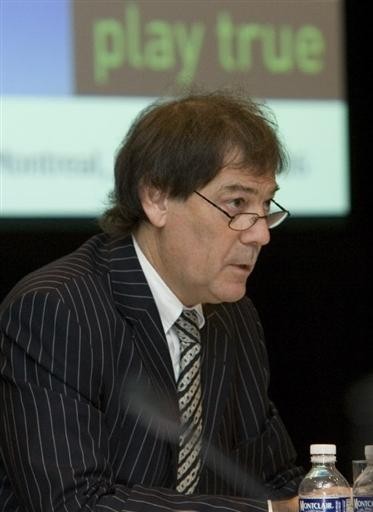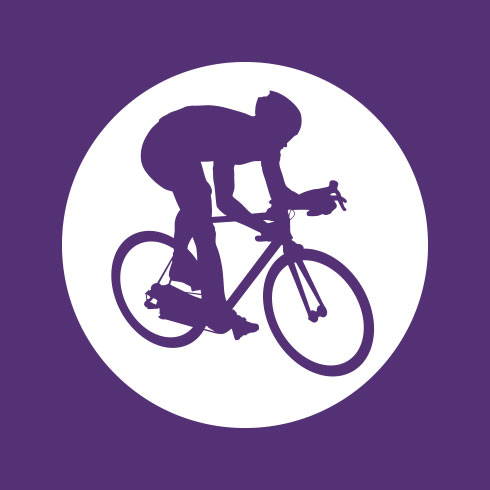World anti-doping code revised
WADA's code is currently undergoing the first major revision since its inception in 2003, and is the...

News feature, January 18, 2007
Cycling has the distinction of being in the centre of some of the most prominent doping scandals in recent years, but some good may come out of the sport's darkest moments. The cases might help pave the way for improvements to the World Anti-doping Association's (WADA) code. A revision of the code was released this week. Cyclingnews' Laura Weislo explains the changes.
WADA's code is currently undergoing the first major revision since its inception in 2003, and is the subject of an iterative process which will see the first draft, which was released this week, undergoing review until May, followed by the release of a second draft. Following the second draft, there will be another review period, leading up to the WADA annual meeting in November, where they hope to finalise the new version of the code.
WADA director general David Howman explained to Cyclingnews that the WADA code was "always intended to be a living document, and not set in stone." The latest revision was the result of more than six months of comments solicited from a list of thousands of 'stakeholders' - governments, sporting organizations, anti-doping authorities and athletes alike. The call for comments on the code was highly successful, and according to Howman, they received "probably more feedback" on this than they have on any other document.
Howman said that the revisions are more like "tweaks" in order to ensure that "best practices" are spelled out. He denied that the changes were influenced by any doping scandals, but did state that the biggest changes relate to sanctions: they received many comments calling for the flexibility to impose bigger sanctions for more serious doping offenses and lighter sentences for less egregious ones.
In the draft, recommended sanctions get doubled for athletes whose doping violations are "part of a larger doping scheme". The document also includes clear language allowing athletes to be sanctioned in the absence of a positive test, "based on the Athlete’s admissions, the credible testimony of third persons, [or] reliable documentary evidence". Howman admitted that clarification for 'non-analytical' positives, or sanctions based on actions other than positive laboratory tests, stem partly from the infamous BALCO cases.
In the revised documents, authors acknowledge that stopping the suppliers of doping is of equal or greater importance as punishing athletes. Administration of doping products to athletes can result in a four year ban for support personnel, and in the case of doping minors, a lifetime ban. A comment to this section states, "Those who are involved in doping Athletes or covering up doping should be subject to sanctions which are more severe than the Athletes who test positive... reporting Athlete Support Personnel to competent authorities is an important step in the deterrence of doping."
The latest race content, interviews, features, reviews and expert buying guides, direct to your inbox!
The prosecution of support personnel who supply doping products will also get a boost from the UNESCO International Convention against Doping in Sport, which is due to go into effect on February 1, 2007. The treaty, said Howman, "was the fastest treaty ever ratified, signaling an advance in anti-doping policy". The treaty allows countries to align their laws with the WADA code, and will aid in the punishment not of consumers of doping products, but those who aid the athletes in procuring or using the drugs. Howman said that the treaty could help governments de-register physicians based on their involvement in doping practices.
The draft also recommends boosting doping controls with the use of "target testing" on specific athletes, rather than simply relying on in-competition, random and voluntary out-of-competition testing. The Target Testing would apply to "world class Athletes, Athletes whose performances have dramatically improved over a short period of time, Athletes whose coaches have had other Athletes test positive, etc." There is no requirement for probable cause or reasonable suspicion for Target Testing, according to the document, "The Code makes it clear that Athletes have no right to expect that they will be tested only on a random basis."
In addition, the code spells out a few provisions for the anticipated future fight against genetic doping. The code includes a provision to sanction riders for a longer period of time if the athlete would "enjoy performance enhancing benefits beyond the period of ineligibility". In the case of gene-doping, the performance enhancing benefits might be lifelong, but the rule can also apply to any drug whose benefit might go beyond the standard two-year sanction. New research, according to Howman, indicates that some steroids may provide benefit for longer than two years.
There are some items of significance to cycling that have been revised, namely the handling of research samples and public comment on anti-doping cases. After Lance Armstrong's 1999 samples allegedly revealed traces of EPO when used for a research study, the subsequent leak of the information to the press caused a maelstrom of debate. The new WADA code tells anti-doping agencies who use samples for research purposes that such samples "shall have the identity code removed such that they cannot be traced back to a particular Athlete."
The code also moves to stop any leaks regarding doping cases coming from WADA labs, stating that "No Anti-Doping Organization or WADA accredited laboratory, or official of either, shall publicly comment on the specific facts of a pending case (as opposed to general description of process and science) except in response to public comments attributed to the Athlete, other Person or their representatives."
While the Prohibited Substances list is reviewed separately from the code, there were many comments relating to the banned list on the WADA website. The Floyd Landis case may have highlighted the problems surrounding the 2005 reduction in the testosterone:epitestosterone ratio limit from 6:1 to 4:1. Comments from stakeholders reflect the controversy.
Denis Oswald, President of the Association of Summer Olympic International Federations objected to the current level, stating "There is no scientific evidence to support the reduction from 6 to 4. It has become a waste of resources in terms of time, money and effort with no apparent benefit. The reduction has produced a dramatic increase in workload and expenses, without revealing any more doping offences."
Lamine Diack, President of the International Association of Athletics Federation agreed, stating that "The administration of T/E cases is currently imposing a huge administrative burden and we believe is an unjustifiable use of our limited anti-doping resources."
Given the lengthy review period, any change would come too late for Landis, whose arbitration is due early this year. The list of banned substances has its own review process which will conclude in September.
